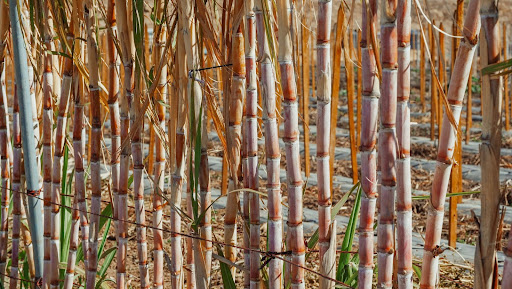Sugar beet vs sugar cane: Advantages and disadvantages for consumers
Introducing the Truth Behind Sugar Beet Vs Sugar Cane: Advantages, Uses, and Processing Techniques Described
The distinction in between sugar beet and sugar cane is usually neglected in conversations about sugar production. Each plant presents special advantages and applications in various markets. Their growing practices and handling techniques additionally differ significantly. Recognizing these nuances is crucial for stakeholders in the sugar industry. What ramifications do these distinctions have for health and wellness, taste, and ecological influence? Discovering these facets can disclose deeper insights right into the global sugar market.

Overview of Sugar Beet and Sugar Cane
Sugar beet and sugar cane are 2 main sources of sugar, each with distinctive attributes and cultivation techniques. Sugar beet, an origin veggie, thrives in temperate climates and is commonly harvested in the fall. Its high sugar material, ranging from 15% to 20%, makes it an important plant for sugar manufacturing. The procedure entails removing juice from the beets, which is after that improved right into granulated sugar.
On the other hand, sugar cane is an exotic yard that thrives in warm, moist settings. It can attain a sugar web content of up to 14%, but its tall, fibrous stalks require comprehensive handling. The cane is crushed to remove juice, which undertakes boiling and crystallization to produce sugar. Both sources contribute greatly to the global sugar supply, with sugar beet mainly cultivated in Europe and The United States And Canada, while sugar cane is primarily expanded in Brazil, India, and various other exotic areas.
Farming Practices: Sugar Beet vs. Sugar Cane
Farming methods for sugar beet and sugar cane vary considerably because of their distinctive expanding conditions. Sugar beetroots grow in cooler environments with well-drained soil, while sugar cane chooses warmer temperatures and bountiful dampness. Furthermore, the harvesting strategies used for every crop reflect these ecological requirements and influence general yield and quality.
Expanding Conditions Comparison
While both sugar beet and sugar cane thrive in particular environmental problems, their cultivation techniques differ considerably. Sugar beet is largely grown in temperate regions, preferring cooler climates with well-drained soil and moderate rains. It requires an expanding season of regarding 90 to 120 days, with suitable temperature levels between 15 ° C to 25 ° C. On the other hand, sugar cane flourishes in exotic and subtropical climates, thriving in cozy temperatures ranging from 20 ° C to 32 ° C. It needs abundant sunshine and consistent rains, typically requiring irrigation in drier locations. Sugar cane has a longer growing cycle, normally lasting 12 to 24 months. These differences in expanding conditions considerably affect the geographical distribution and farming practices connected with each plant.
Collecting Strategies Differences
The harvesting methods for sugar beet and sugar cane mirror their distinctive growth features and agricultural methods. Sugar beet is typically gathered mechanically, with harvesters developed to root out the whole plant, ensuring very little dirt disturbance. The beets are after that transported for processing soon after harvest to keep high quality. In contrast, sugar cane harvesting usually entails a mix of handbook and mechanical approaches. Employees may initially cut the cane by hand, specifically in areas where mechanization is less viable. Ultimately, specialized machinery is used to gather and carry the cut stalks to refining centers. These varying techniques not only impact performance however likewise influence the top quality and return of the last sugar products, showcasing the adaptability of each crop to its atmosphere.
Nutritional Comparison and Health And Wellness Benefits
When comparing the nutritional profiles of sugar beet and sugar cane, it becomes clear that each offers distinctive health and wellness advantages. Sugar beetroots are abundant in essential nutrients like folate, manganese, and potassium, which contribute to overall health and wellness. They likewise include fiber, which aids digestion and might assist manage blood glucose levels. Additionally, sugar beetroots are known for their antioxidant properties, which can combat oxidative tension.
Alternatively, sugar cane is primarily composed of sucrose, giving fast energy. While it lacks the same degree of nutrients located in sugar beets, sugar cane does consist of percentages of B minerals and vitamins such as calcium and magnesium. Sugar cane juice is commonly touted for its hydrating residential or commercial properties and potential health and wellness benefits, consisting of improved digestive system health and wellness. Ultimately, the selection between sugar beet and sugar cane might rely on specific health objectives and dietary preferences.
Flavor Accounts and Culinary Makes Use Of
Flavor profiles of sugar beet and sugar cane differ noticeably, influencing their culinary applications (Sugar beet vs sugar cane). Sugar cane, with its naturally wonderful and intricate flavor, is commonly favored in beverages, desserts, and different cooking dishes. It lends a rich, caramel-like note that improves the taste of things such as syrups, molasses, and rum. On the other hand, sugar beet has a much more neutral and much less fragrant preference, making it suitable for applications where sweetness is wanted without altering the dish's intrinsic tastes. It is regularly made use of in refined foods, baked products, and sweeteners
Culinary specialists frequently choose sugar cane for its depth and richness, particularly in premium food preparation and craft drinks. Conversely, sugar beet's adaptability as a sugar in mass-produced things deals with a wider market. Inevitably, the option between these two sugars can considerably influence taste accounts and general culinary experiences.
Environmental Effect of Sugar Production
Sugar production, whether from sugar beet or sugar cane, carries significant ecological implications. Sugar cane cultivation frequently results in deforestation, especially in tropical regions, interfering with neighborhood communities and contributing to biodiversity loss. The comprehensive use fertilizers and pesticides in both sugar beet and sugar cane farming can lead to dirt degradation and water contamination, impacting surrounding environments and neighborhoods. Furthermore, the high water consumption needed for sugar cane watering presents a danger to regional water supplies, specifically in deserts.
On the other hand, sugar beet farming usually occurs in pleasant climates, which might minimize some logging problems. It is not without its own obstacles, including soil disintegration and reliance on chemical inputs. Overall, the ecological impact of sugar manufacturing is multifaceted, requiring you could try these out sustainable farming techniques and understanding of source management investigate this site to minimize damage to communities and promote ecological health and wellness.
Processing Techniques: From Plant to Sugar
Various handling methods are employed to transform sugar beet and sugar cane into granulated sugar, each approach reflecting the special qualities of the resource plant. For sugar beetroots, the procedure starts with cleaning and cutting the origins right into slim strips, which are then subjected to diffusion-- a technique where warm water essences sugar from the beet slices. The resulting fluid is cleansed, concentrated, and taken shape.
In contrast, sugar cane handling entails squashing the stalks to remove juice, followed by explanation to remove pollutants. The juice is then evaporated, resulting in syrup that undertakes condensation. Both procedures are followed by separation of the sugar crystals from the molasses, which is a by-product. The final phases consist of drying out and packaging the granulated sugar for circulation. These strategies highlight the distinct paths where these two plants produce sugar, each with its very own set of difficulties and efficiencies.
Economic Facets of Sugar Beet and Sugar Cane Industries
The financial landscape of the sugar beet and sugar cane markets exposes noteworthy distinctions in production costs, market dynamics, and local effects. Sugar beet, mostly grown in temperate climates, commonly incurs greater manufacturing expenses because of labor and input expenses. On the other hand, sugar cane prospers in tropical regions, normally benefiting from reduced labor costs and desirable weather conditions, which can result in greater yields.
Market dynamics likewise differ, as sugar cane dominates worldwide manufacturing, making up roughly 80% of sugar outcome. This occurrence affects rates structures and trade flows. In comparison, sugar beet is much more regionally concentrated, particularly in Europe and The United States and Canada, influencing local economies depending on beet manufacturing.
Additionally, variations in global sugar costs can substantially influence both industries, affecting farmer earnings and financial investment degrees. Understanding these financial facets is crucial for stakeholders intending to navigate the complexities of the sugar market efficiently.

Regularly Asked Questions

Can Sugar Beet and Sugar Cane Be Intercropped Successfully?
Intercropping sugar beet and sugar cane provides challenges because of differing development needs and ecological needs. click reference However, with cautious management and suitable conditions, it may yield advantages such as improved dirt health and resource performance.
What Are the Historical Origins of Sugar Beet and Sugar Cane?
The historic beginnings of sugar beet trace back to 18th century Europe, while sugar cane has roots in Southeast Asia, cultivated for countless years. Both plants have considerably influenced global sugar manufacturing and farming.
Exactly How Do Sugar Beet and Sugar Cane Affect Dirt Health?
The results of sugar beet and sugar cane on soil health and wellness differ. Sugar beet can boost dirt framework and nutrient content, while sugar cane might diminish nutrients if not taken care of effectively, influencing lasting soil fertility.
Are There Any Kind Of Arising Technologies in Sugar Manufacturing?
Emerging technologies in sugar manufacturing include precision farming, advanced hereditary engineering for greater yields, and innovative removal methods. These developments aim to boost performance, minimize environmental influence, and enhance the overall sustainability of sugar production processes.
What Are the Secret Distinctions in Labor Requirements for Both Crops?
The essential distinctions in labor demands for sugar beet and sugar cane lie in planting, harvesting, and processing. Sugar beet vs sugar cane. Sugar beet usually requires more automation, while sugar cane usually calls for a lot more manual work for gathering and refining stages